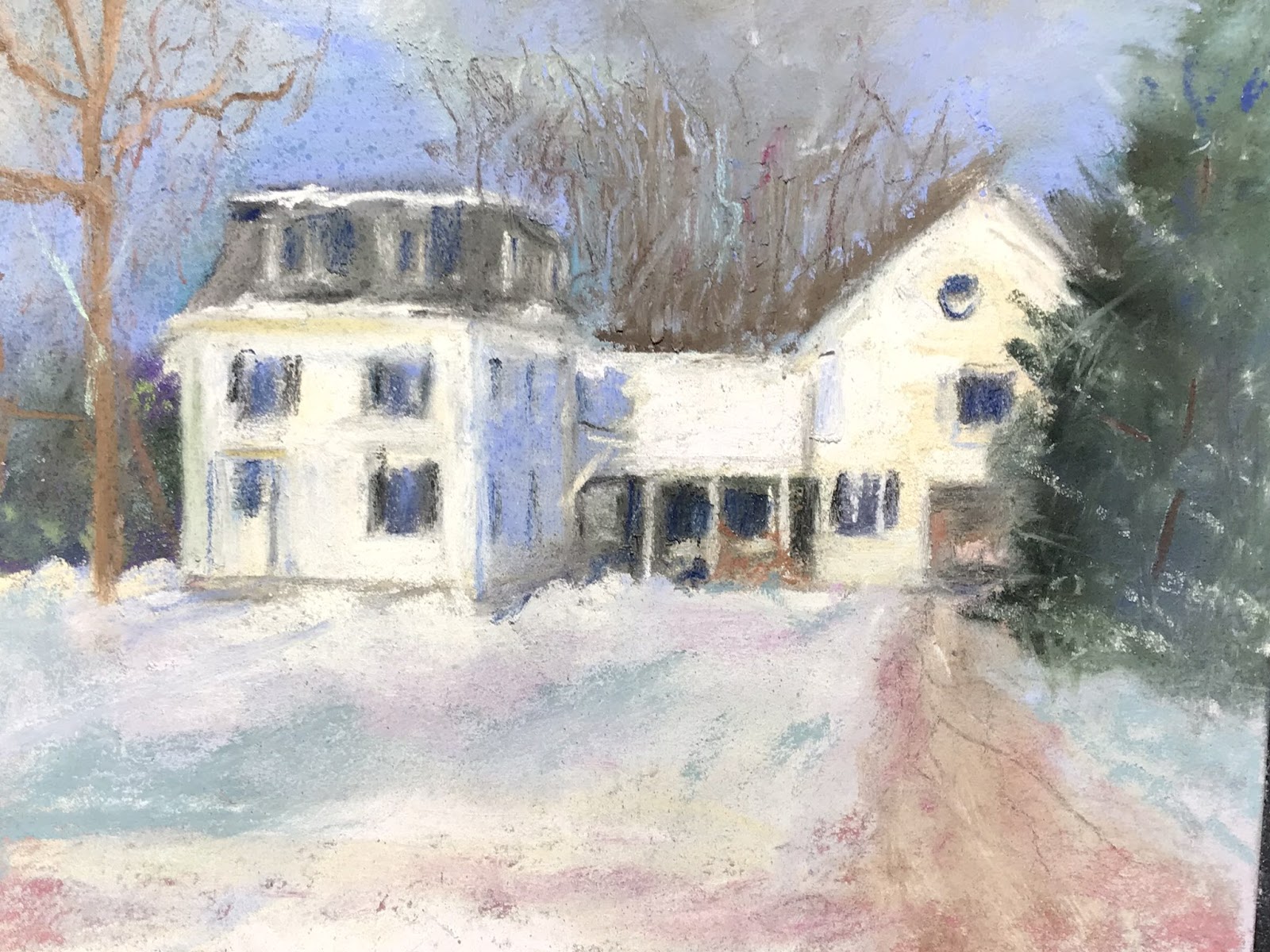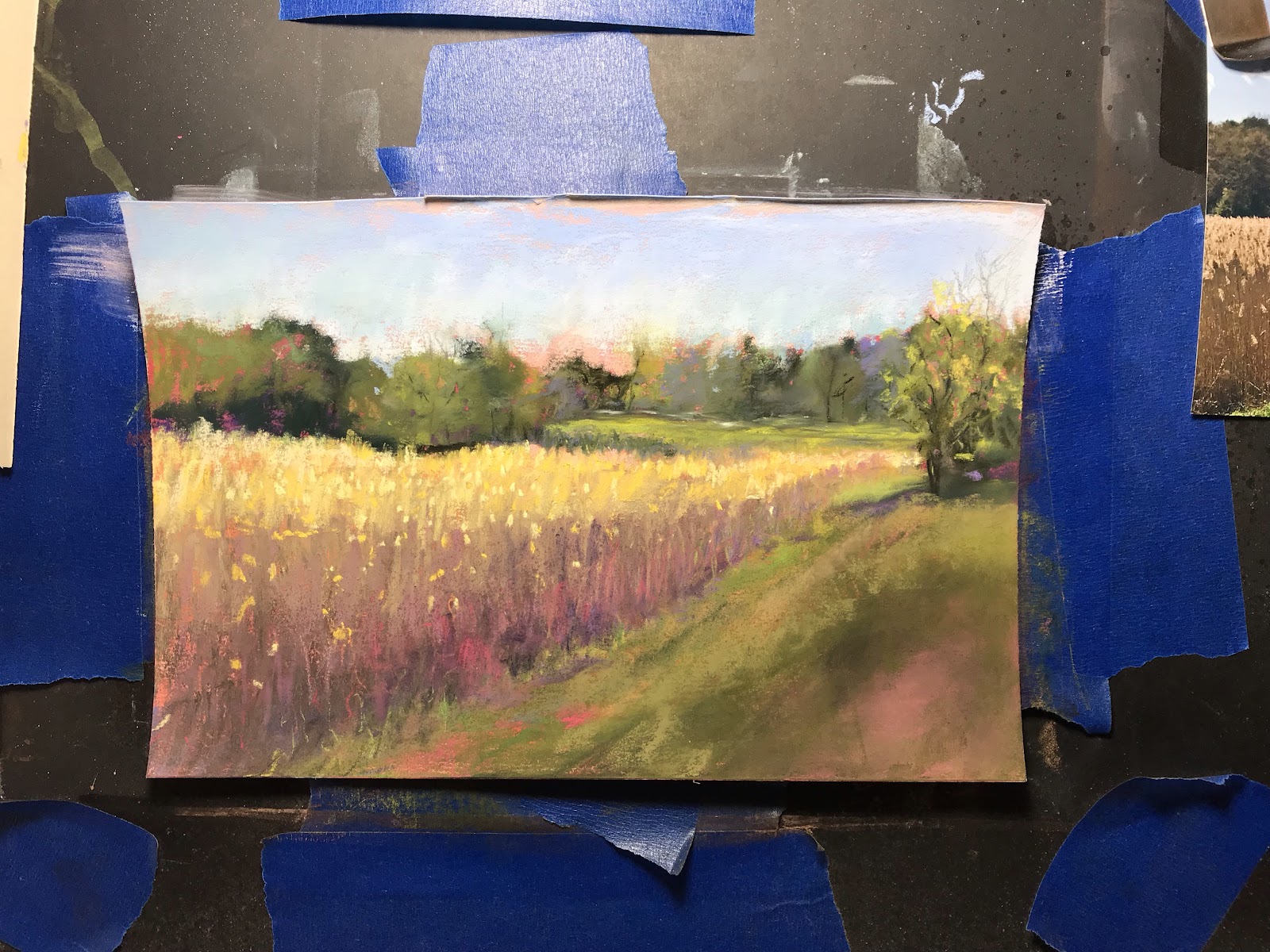Wednesday, October 2, 2019
The House In Maine
The House In Maine is a small thumbnail painting and I’m hoping to paint a larger one in the future. Here’s part of my work in progress:





Monday, May 27, 2019
What’s On The Easel?
Working on this 5x7 landscape on 400 Uart paper. Love the angles and the colors . It’s not finished, I’m still thinking about some deeper colors in purples and blue in the foreground . Maybe some Terry “Eggplant” ❤️

Tuesday, May 7, 2019
Sandi Graham Pastels: Rescue Painting Finished.
Sandi Graham Pastels: Rescue Painting Finished.: I think I’m finished with this rescue and I’m naming it! Usually I keep it out somewhere so I can revisit before signing. Framing will come ...
Thursday, April 4, 2019
Let’s try a competition !
I love Uart paper to paint on and when they had a competition

I sent my painting Park Urn in . Never dream of winning
But fun to enter.
Saturday, March 23, 2019
Cloud Study
This is about clouds so probably won’t include much of the land or the buildings
As I go along. I’m playing with color and cloud style. Let’s see what I end up with
In the next post!
Tuesday, March 19, 2019
Rescue Painting Finished.
I think I’m finished with this rescue and I’m naming it!
“The House On Big Beach “ 5x7 pastel on Uart
Usually I keep it out somewhere so I can revisit before signing.
Framing will come later when I have a finished pieces
framing session.
“The House On Big Beach “ 5x7 pastel on Uart
Sunday, February 3, 2019
Putting The Pieces Together
As you can tell I’ve been working on the sky and water . I’m also establishing the beach house and grasses.
Here is the photo I took on an October day at the Cape:
Working to brighten the day on Cape and putting the puzzle together.
Eventually I’ll work on the forgound getting that established. I often refer to the photo at this point but I
Never plan to paint the photo.

Here is the photo I took on an October day at the Cape:

Working to brighten the day on Cape and putting the puzzle together.
Stay tuned!
Thursday, January 24, 2019
How I Rescue A Failed Painting -What’s On The Easel? Or Puzzle Painting
I was working on a pastel painting en plen air this summer and it just wasn’t coming together so I rinsed off the Uart sanded paper I was using, removing the pastel . I’m starting over with an easel painting from a photo . I always feel when I start a painting I’m starting a new puzzle, placing pieces in place . I’m trying to get a basic outline and shape of the puzzle painting ! Here’s a start of my puzzle painting:

Stay tuned for the next pieces in the puzzle! Looks like a jumble of lines right now!

Stay tuned for the next pieces in the puzzle! Looks like a jumble of lines right now!
Hi I’m back and busy painting and cooking!
I have been collecting recipes and trying new things this winter and painting in both pastel and acrylic. I will post a recipe and a painting.
I have been baking bread nearly every week as I found a great No Knead Peasant Bread recipe from a fave site Food52
Here’s the Recipe:
Alexandra Stafford's No-Knead Peasant Bread
By Genius Recipes
This is it: the bread recipe so simple and good, it will get you baking bread every week—even if you’ve never made a loaf in your life. It’s the comforting, no-knead peasant bread that’s ready in as little as 2 hours, unlike other no-knead breads that are ready ... tomorrow. Recipe adapted slightly from Makes two 14-ounce loavesPrep time: 2 hrs 45 min
Cook time: 35 min
Subscribe to:
Posts (Atom)